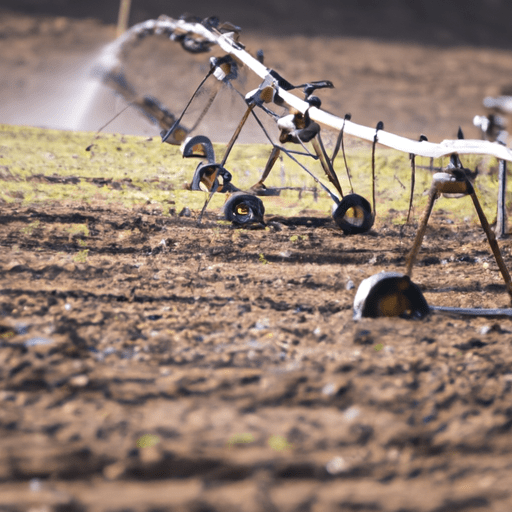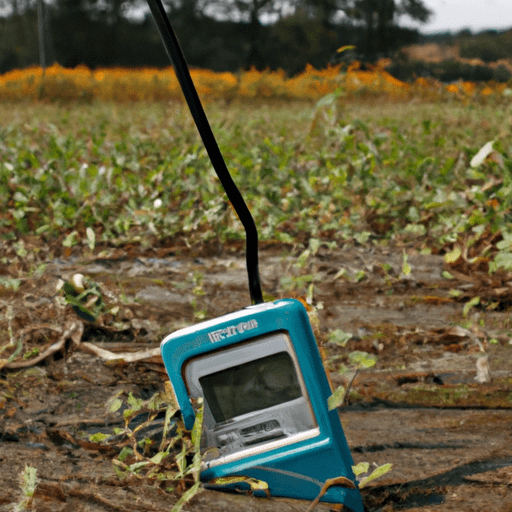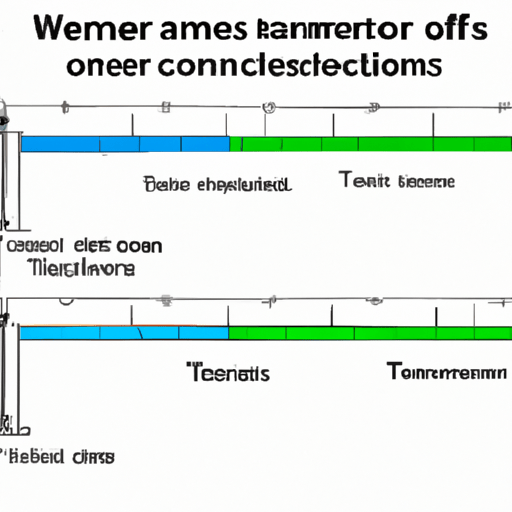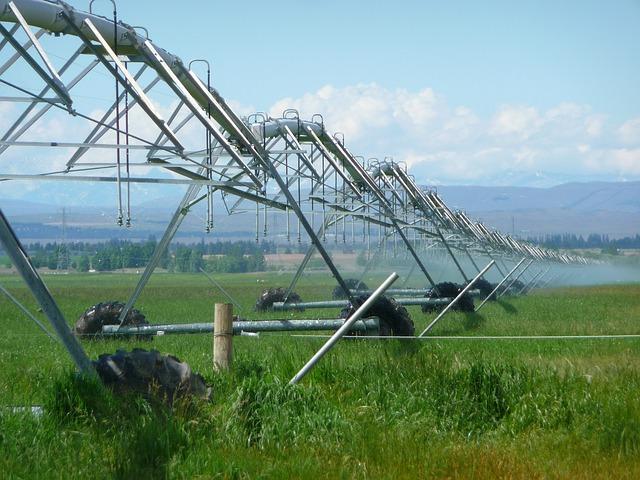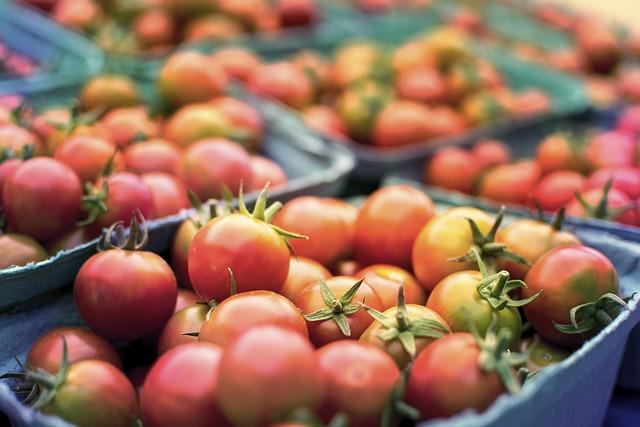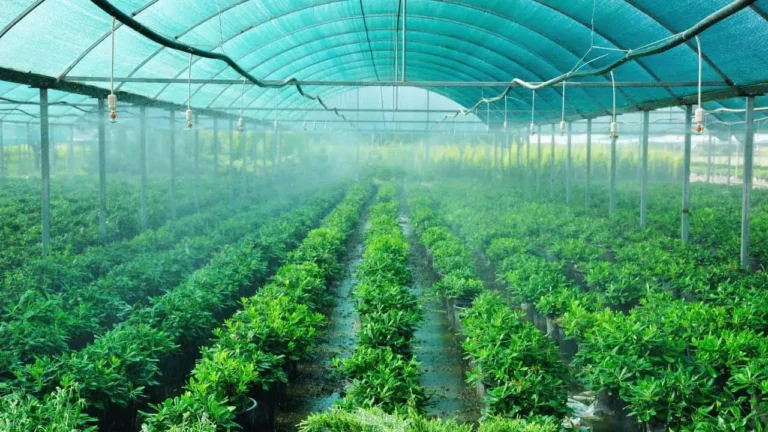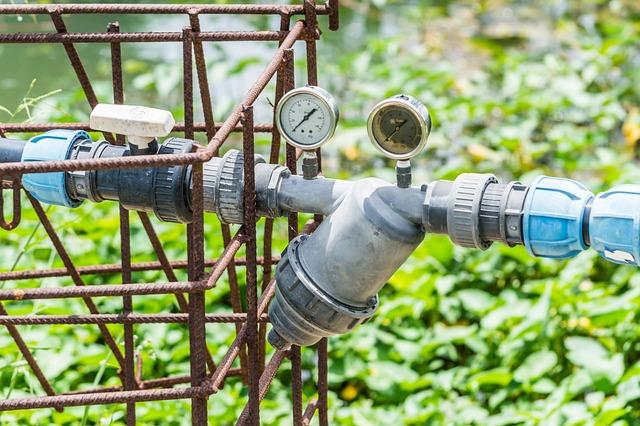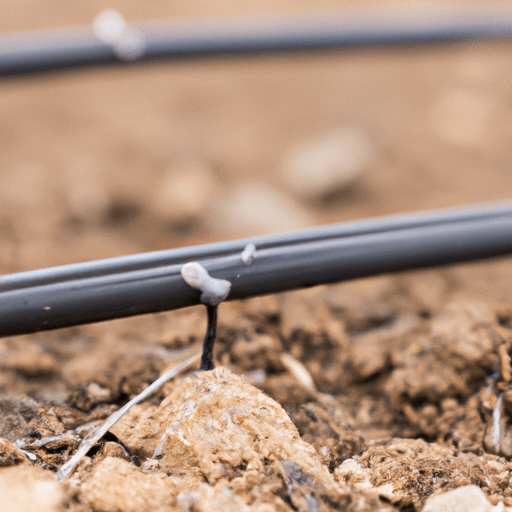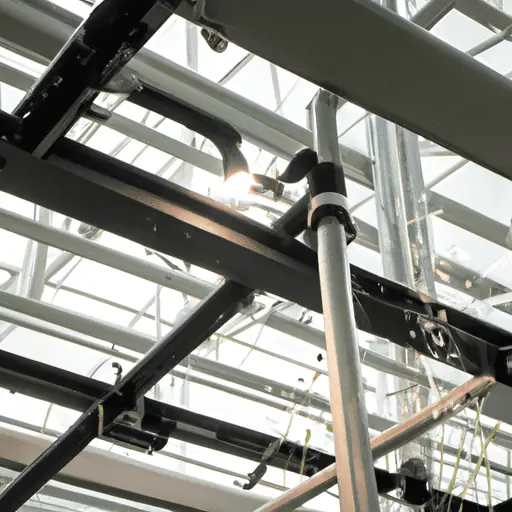This professional guide, titled ‘Agricultural Irrigation Design’, serves as a comprehensive resource for both indoor and outdoor commercial customers seeking precision design irrigation and fertilization solutions. It covers a wide range of topics, including the use of tension meters for optimal oxygen availability, the intricate process of designing an irrigation system, and the comparative analysis between tension meters and soil volumetric water content. Brought to you by Rootstalk.com, this guide combines cutting-edge technology with practical applications for the modern agricultural landscape.
1. Introduction: The Importance of Precision in Irrigation Design
Irrigation design plays a crucial role in maximizing agricultural productivity while conserving water resources. At Rootstalk.com, we understand the significance of precision in irrigation design for both indoor and outdoor commercial customers. Our focus lies in providing accurate and efficient irrigation and fertilization solutions tailored to the specific needs of each client. By employing advanced techniques and technology, we ensure that our designs optimize water usage, minimize wastage, and promote healthy plant growth.
- Enhancing Oxygen Availability for Plant Growth
Oxygen availability is vital for plant growth as it influences various physiological processes, including root respiration and nutrient uptake. Insufficient oxygen levels in the root zone can lead to poor plant performance and reduced yields. To address this issue, our irrigation designs incorporate tension meters to monitor soil moisture levels and ensure adequate oxygen supply to the roots. By accurately measuring soil moisture tension, we can determine when irrigation is needed, preventing under or overwatering and promoting optimal plant health. - The Design Process:
From Assessment to Implementation
Designing an effective irrigation system involves a comprehensive process that begins with a thorough assessment of the site and specific crop requirements. Our team of experts carefully analyzes factors such as soil type, topography, climate, and water availability to devise a customized irrigation plan. We consider factors like water source, irrigation method, and equipment selection to ensure efficient water distribution across the field. Our designs also incorporate proper filtration and backflow prevention systems to maintain water quality and safety.Tension Meters vs. Soil Volumetric Water Content:
Making the Right Choice
When it comes to monitoring soil moisture, two common methods are tension meters and soil volumetric water content measurements. Tension meters measure the force required to extract water from the soil, providing a direct indication of the plant’s access to water. On the other hand, soil volumetric water content sensors measure the amount of water present in the soil. While both methods have their merits, tension meters offer a more accurate and real-time assessment of plant water availability. At Rootstalk.com, we prioritize the use of tension meters in our precision irrigation designs to ensure optimal water management and healthier crops.
1. Image of a well-designed agricultural field with a precision irrigation system installed
2. ‘Water is the driver of Nature’ – Leonardo da Vinci: The Role of Oxygen in Plant Growth
Water is a fundamental element for plant growth, but its importance goes beyond mere hydration. As Leonardo da Vinci famously said, “Water is the driver of Nature,” highlighting the crucial role it plays in sustaining life on Earth. Oxygen, another essential component, is equally vital for plants as it directly influences their growth and development. Plants require oxygen for various physiological processes, particularly in the roots, where it aids in respiration and nutrient uptake.
Oxygen availability in the root zone is essential for promoting healthy plant growth and maximizing productivity. When there is insufficient oxygen present, roots may become stressed, leading to reduced nutrient absorption and overall plant vigor. In such conditions, plants may exhibit stunted growth, yellowing leaves, and increased susceptibility to diseases and pests.
Proper oxygenation of the root zone is crucial for ensuring optimal plant performance. It allows for efficient nutrient uptake, as well as the breakdown of organic matter and release of essential elements. Adequate oxygen levels also support beneficial microbial activity in the soil, facilitating nutrient cycling and improving soil structure.
By incorporating oxygen availability into our irrigation design at Rootstalk.com, we ensure that plants receive the necessary oxygen supply for their growth and development. We understand the significance of monitoring and maintaining optimal oxygen levels in the root zone to promote healthy root systems and improve plant resilience. Our precision irrigation designs, coupled with the use of tension meters, help us achieve this goal by accurately assessing soil moisture levels and ensuring adequate oxygenation for plant roots.
3. Tension Meters: A Key Tool for Monitoring Oxygen Availability?
Tension meters are valuable instruments that play a crucial role in monitoring oxygen availability in the root zone. They provide precise measurements of soil moisture tension, which is an indicator of how tightly water is held within the soil. By measuring soil moisture tension, tension meters can indirectly assess the availability of oxygen in the root zone.
- 1. How do tension meters work?
Tension meters operate based on the principle of tensiometry. They consist of a porous ceramic cup that is buried in the soil, allowing it to come into contact with the surrounding moisture. As plants extract water from the soil, the tension meter measures the vacuum or suction pressure required to pull water from the porous cup. This vacuum pressure, commonly expressed in units of kilopascals (kPa), provides valuable information about the soil’s moisture status and indirectly indicates the oxygen availability in the root zone. - 2. Benefits of Using Tension Meters
Tension meters offer several advantages in monitoring oxygen availability compared to other methods. Firstly, they provide real-time measurements, allowing for immediate assessment of soil moisture tension and subsequent adjustments to irrigation practices. This helps prevent both under and overwatering, ensuring optimal oxygen availability for the roots. Additionally, tension meters offer a non-destructive method of monitoring soil moisture, allowing for repeated measurements without disturbing the root zone. - 3. Limitations and Considerations
While tension meters are valuable tools, it is essential to consider their limitations. Tension meters are most effective in soils with a consistent texture, as variations in soil composition can affect their accuracy. Additionally, proper installation and calibration are crucial for obtaining reliable measurements. Regular maintenance and periodic calibration checks are necessary to ensure the accuracy of tension meters. It is also important to note that tension meters provide an indirect measurement of oxygen availability, and other factors such as soil compaction and root density should also be considered when interpreting the results.
3. Photo of a tension meter being used in a farm field
4. The Process of Designing an Irrigation System: How Does It Work?
Designing an irrigation system involves a systematic approach that takes into account various factors to ensure efficient and effective water distribution. This process can be broken down into three main steps:
assessing the site, determining water requirements, and selecting the appropriate irrigation components.
- 1. Assessing the Site:
The first step in designing an irrigation system is to assess the site. This involves gathering information about the soil type, topography, climate, and plant types present. Soil type is particularly important as it influences water infiltration rates and drainage capabilities. Topography affects water flow and potential areas of water pooling. Climate information helps determine the frequency and duration of irrigation events, while plant types inform water requirements. By understanding these site-specific factors, designers can tailor the irrigation system to meet the specific needs of the site. - 2. Determining Water Requirements:
Once the site assessment is complete, the next step is to determine the water requirements of the plants. This involves considering factors such as evapotranspiration rates, plant water needs, and crop coefficients. Evapotranspiration is the combined loss of water through evaporation from the soil surface and transpiration from plant leaves. Plant water needs vary depending on factors such as growth stage and species. Crop coefficients are used to adjust evapotranspiration rates based on specific plant types. By accurately determining water requirements, designers can avoid under or over-irrigation, ensuring optimal plant health and water conservation. - 3. Selecting the Appropriate Irrigation Components:
Once the water requirements are established, the final step is to select the appropriate irrigation components. This includes choosing the type of irrigation system (drip, sprinkler, etc.), spacing and placement of emitters or sprinklers, and determining the flow rates and pressure requirements. Factors such as water source availability and quality also need to be considered. Designers must evaluate factors such as system efficiency, uniformity, and ease of maintenance when selecting components. By selecting the right irrigation components, designers can ensure efficient water distribution and minimize water waste.
5. Tension Meters vs Soil Volumetric Water Content: Which One Should You Choose?
When it comes to monitoring soil moisture levels, there are two common methods: tension meters and soil volumetric water content measurements. Both techniques provide valuable information about the water availability in the soil, but they have distinct differences that should be considered when choosing the appropriate method for irrigation design.
Tension meters measure the amount of suction or tension required to extract water from the soil. This measurement indicates the amount of force plants need to exert to extract water from the soil, giving insights into the plant’s ability to access water. Tension meters are precise and provide real-time data on soil moisture levels. They are particularly useful in situations where precise control over irrigation is necessary, such as in greenhouse or hydroponic systems.
On the other hand, soil volumetric water content measurements provide information about the percentage of water present in the soil compared to its total volume. This method uses sensors to measure the amount of water in the soil, providing an overall picture of soil moisture levels. Soil volumetric water content measurements are more suitable for larger-scale applications, such as agricultural fields, where a broader understanding of soil moisture conditions is required.
The choice between tension meters and soil volumetric water content measurements depends on the specific needs of the irrigation design project. If precision control and real-time data are crucial, tension meters are the preferred choice. However, if a broader understanding of soil moisture levels is sufficient, soil volumetric water content measurements can provide valuable information.
It is worth noting that combining both methods can provide a comprehensive understanding of soil moisture dynamics. By using tension meters in conjunction with soil volumetric water content measurements, designers can obtain detailed information about soil moisture levels and make more informed decisions regarding irrigation scheduling and water management.
5. Comparative chart showing the pros and cons of tension meters and soil volumetric water content
6. Fertilization in Irrigation Design: How to Maximize Efficiency?
Fertilization plays a crucial role in maximizing the efficiency and effectiveness of irrigation systems. Proper nutrient management ensures that plants receive the necessary elements for growth and development, leading to improved yields and overall plant health. To maximize efficiency in fertilization within irrigation design, several key factors should be considered.
Firstly, understanding the specific nutrient requirements of the crops being grown is essential. Different plants have varying nutrient needs at different growth stages. Conducting soil tests and plant tissue analysis can provide valuable information about the nutrient levels in the soil and help determine the appropriate fertilization plan.
Secondly, incorporating a fertigation system into the irrigation design can greatly enhance efficiency. Fertigation involves the application of fertilizers through the irrigation system, allowing for precise and targeted nutrient delivery directly to the roots. This method ensures that nutrients are efficiently absorbed by the plants, minimizing waste and reducing the risk of nutrient leaching.
Furthermore, using slow-release or controlled-release fertilizers can help maintain a steady supply of nutrients to the plants over a more extended period. These types of fertilizers release nutrients gradually, reducing the risk of nutrient loss and increasing nutrient uptake by the plants.
Finally, regular monitoring and adjustment of the fertilization program are crucial for maximizing efficiency. Continuous monitoring of nutrient levels in the soil and plant tissue can help identify any deficiencies or excesses and allow for prompt adjustment. This ensures that the plants receive the correct balance of nutrients, optimizing their growth and minimizing the potential for nutrient-related issues.
7. ‘The best time to plant a tree was 20 years ago. The second best time is now’ – Chinese proverb: The Future of Irrigation Design with Rootstalk.com
In the ever-evolving world of agriculture, the future of irrigation design holds immense potential for improving efficiency, sustainability, and productivity. Rootstalk.com, a leading company in precision irrigation design, is at the forefront of this future, offering innovative solutions for indoor and outdoor commercial customers.
1. Embracing Technology for Smarter Irrigation Design:
Rootstalk.com understands the importance of harnessing technology to enhance irrigation design. By leveraging advanced sensors, data analytics, and automation, they are able to create smart irrigation systems that optimize water usage, reduce waste, and increase crop yields. Through the integration of real-time data and intelligent algorithms, these systems can adjust irrigation schedules and amounts based on factors such as weather conditions, plant needs, and soil moisture levels.
- 2. Sustainability as a Core Principle:
Rootstalk.com firmly believes in the importance of sustainable irrigation practices. They prioritize the conservation of water resources by designing systems that minimize water loss through evaporation, runoff, and deep percolation. Through the use of precision irrigation techniques, such as drip irrigation or micro-sprinklers, water can be targeted directly to the plant’s root zone, reducing water waste and improving water-use efficiency. - 3. Collaboration and Knowledge Sharing:
Rootstalk.com recognizes the value of collaboration and knowledge sharing in shaping the future of irrigation design. They actively engage with researchers, agronomists, and industry experts to stay updated on the latest advancements in irrigation technology and best practices. By fostering a culture of continuous learning and collaboration, Rootstalk.com ensures that their customers receive the most innovative and effective irrigation solutions available.
7. A futuristic image of a farm using advanced irrigation techniques provided by Rootstalk.com
Agricultural Irrigation Design:
| Design Type | Tension Meter | Design Process | Comparative Analysis |
|---|---|---|---|
| Indoor | Yes | Intricate | Tension Meters vs Soil Volumetric Water Content |
| Outdoor | Yes | Intricate | Tension Meters vs Soil Volumetric Water Content |
| Indoor | no | Simple | Tension Meters vs Soil Volumetric Water Content |
| Outdoor | no | Simple | Tension Meters vs Soil Volumetric Water Content |
In conclusion, the design of an agricultural irrigation system is a complex but crucial process. A well-designed system can greatly increase the efficiency of water and fertilizer use, leading to higher crop yields and reduced environmental impact. The use of tension meters to ensure optimal oxygen availability is a key component of this process. Ultimately, the goal is to create a system that precisely meets the needs of the crops while minimizing waste. With the knowledge provided in this guide, users of Rootstalk.com can make informed decisions about their irrigation design needs.


